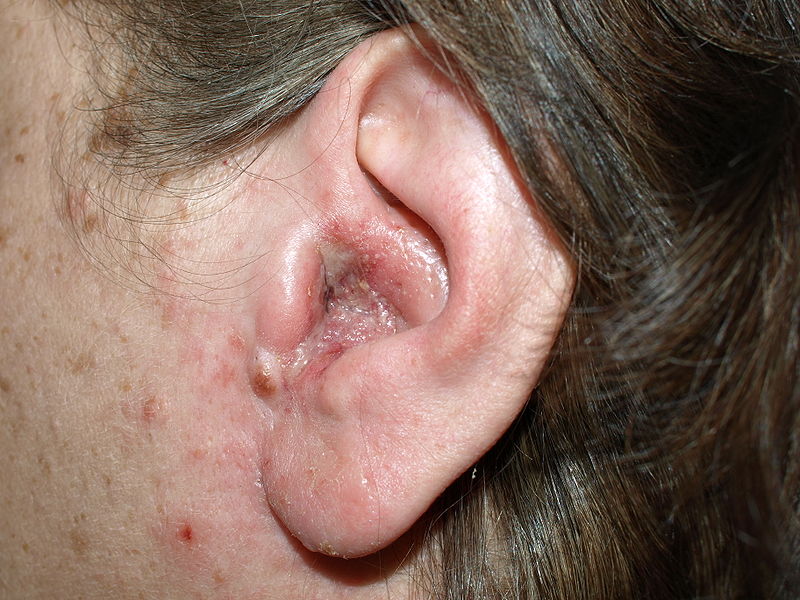Otitis externa (also known as external otitis or swimmer’s ear) is an infection of the external auditory canal that is most often caused by bacteria Bacteria Bacteria are prokaryotic single-celled microorganisms that are metabolically active and divide by binary fission. Some of these organisms play a significant role in the pathogenesis of diseases. Bacteriology. Otitis externa is frequently associated with hot, humid weather and water exposure. Patients Patients Individuals participating in the health care system for the purpose of receiving therapeutic, diagnostic, or preventive procedures. Clinician–Patient Relationship commonly present with ear pain Ear Pain Acute Otitis Media, pruritus Pruritus An intense itching sensation that produces the urge to rub or scratch the skin to obtain relief. Atopic Dermatitis (Eczema), discharge, and hearing loss Hearing loss Hearing loss, also known as hearing impairment, is any degree of impairment in the ability to apprehend sound as determined by audiometry to be below normal hearing thresholds. Clinical presentation may occur at birth or as a gradual loss of hearing with age, including a short-term or sudden loss at any point. Hearing Loss. The diagnosis is made clinically. Most types of otitis externa are treated with topical antibiotic therapy. Complications include periauricular cellulitis Cellulitis Cellulitis is a common infection caused by bacteria that affects the dermis and subcutaneous tissue of the skin. It is frequently caused by Staphylococcus aureus and Streptococcus pyogenes. The skin infection presents as an erythematous and edematous area with warmth and tenderness. Cellulitis and malignant otitis externa.
Last updated: Jan 10, 2023
Otitis externa is an infection of the external auditory canal.

Erythema, edema, and purulent drainage due to otitis externa
Image: “Otitis externa” by Klaus D. Peter. License: CC BY 3.0
Significant crusted, purulent debris and erythema of the ear due to otitis externa
Image: “A severe case of otitis externa” by James Heilman, MD. License: CC BY 3.0The diagnosis of otitis externa is based on the history and physical examination. Culture of the ear canal or discharge is indicated for severe, recurrent, or chronic cases.
Also known as necrotizing otitis externa, this is an invasive, life-threatening infection of the external auditory canal and skull Skull The skull (cranium) is the skeletal structure of the head supporting the face and forming a protective cavity for the brain. The skull consists of 22 bones divided into the viscerocranium (facial skeleton) and the neurocranium. Skull: Anatomy base.
Etiology:
Clinical presentation:
Diagnosis:
Management:
Complications: